The Influence of Christian Interests in
Setting the Route of the Security Fence in Jerusalem
Col. (res.) Danny Tirza
In September 2000, the Palestinian leadership initiated a terror campaign against the Israeli civilian population. From September 2000 to March 2005, 99 suicide bombings were perpetrated against Israel, in which 1,804 Israelis were killed. In Jerusalem, 30 suicide attacks killed 378 Israelis and wounded 1,600. Since that time, no Palestinian Authority force has dismantled the operational capabilities of the terrorist organizations.
In March 2002, after the mass murder of civilians gathered for the Passover Seder meal at a Netanya hotel, the government of Israel decided to take control over the West Bank as well as taking a defensive measure to block terrorists from reaching Israeli population centers. This meant establishing a physical obstacle and transit points that would permit proper security checks for those passing through. Even Israel's worst enemies confessed that the security fence saved Israeli lives.
Jerusalem's sanctity for Christianity and its historic and religious sites bring to the city hundreds of thousands of Christian pilgrims every year. The Christian communities residing in the city have established communal centers, educational institutions, hospitals, and guesthouses. Aside from monasteries and holy places, scores of Christian institutions that operate in Jerusalem have come to assist the local Muslim community in the context of their charitable work.
Great efforts were invested and solutions were provided to meet the unique needs of the Christian churches in the region to guarantee freedom of religion and religious observance, and free access to holy places. For institutions located on the seam line, decisions were necessary regarding the exact line of the fence and suitable passage arrangements. Thus, for example, the Rosary Sisters school in the Dachyat El Barid neighborhood north of Jerusalem, that serves 1,200 students from Jerusalem, was included on the Israeli side of the fence, in light of requests from the Mother Superior of the order, despite the vast attendant security difficulties.
With the intensification of Palestinian terror attacks against Israel and the weakening of central Palestinian rule, extreme Muslim forces have gathered strength and violence towards Christian communities has intensified within the Palestinian Authority in Bethlehem, Beit Jalla, Beit Sahur, and Azariya. The result is that an appreciable portion of the Christian population has abandoned the region and taken up residence abroad. Harassment of Christians has also taken the form of land and property seizures and even damage to churches and holy sites.
The establishment of the security fence was a vital measure for the security of Israel's citizens and those members of all faiths visiting Israel. Only when visitors to Jerusalem enjoy a sense of security can there be normal life, religious observance, and pilgrimage to the holy sites.
The war that the Palestinian terrorist organizations imposed on Israel in the year 2000 claimed hundreds of dead and thousands of wounded in Israeli population centers. As part of the measures that the government of Israel adopted in order to check the terror waves, it was decided in June 2002 to establish a security fence between the West Bank and Israel. Together with guaranteeing the fence's security effectiveness, the fence's planners were called upon to provide a response to a series of challenges that emanated from the potential impact of the fence on the everyday lives of the Palestinian civilian population. This required the design of the fence to provide a response to the unique needs of Christian churches and individuals.
In this document the person who headed the military administration that planned the fence describes the challenges, the process and response to the needs of Christian institutions in Jerusalem.
Prologue
In June 2000 a peace conference convened at Camp David, Maryland, with the declared objective of achieving an historic peace agreement between Israel and the Palestinians. After sixteen days of dramatic deliberations, it became clear that the conference was a failure; President Bill Clinton accused Palestinian leader Yasser Arafat of inflexibility and an unwillingness to reach an agreement.
The Palestinian leadership, having understood that it would be impossible to achieve its political goals via diplomacy, elected to initiate a terror campaign against the Israeli civilian population with a view toward pressuring the Israeli government and attaining additional gains.
From September 2000 to March 2005, hundreds of terror attacks against Israel were perpetrated, including 99 suicide bombings in which 1,804 Israelis were killed. In Jerusalem, 30 suicide attacks were carried out in which 378 Israelis were killed and about 1,600 were wounded.1 Free access to Israel from the West Bank allowed the terror organizations, headed by the Tanzim organization of the ruling Fatah party and the military wing of the extreme Islamic organization Hamas, to dispatch scores of suicide bombers to the heart of Israel's civilian population.
For its part, the Israeli government adopted a series of military actions to check the Palestinian terror wave by locating, striking, and neutralizing the terror infrastructure in the Palestinian cities, hampering terrorist movement from the Palestinian cities to Israeli civilian centers, and guarding population centers. This was alongside repeated attempts at diplomatic measures via American mediation to halt the murderous terror activities.
In March 2002 alone, 139 Israelis were murdered in a series of terrorist attacks whose nadir was a mass murder of civilians gathered for the Passover Seder meal at a Netanya hotel.
Under heavy public pressure, the government of Israel decided to take control over the area of the Palestinian Authority in the West Bank and assume security responsibility for the entire area as well as taking a defensive measure to block terrorists from reaching Israeli population centers. This meant establishing a physical obstacle and transit points that would permit proper security checks for those passing through the transit points.
In its desire to refrain from setting a line that would constitute a precedent for a boundary in future political arrangements and seeking to limit the political debate over the suitable line, the government decided to charge the security bodies with delineating the line of the fence employing purely security considerations. The government declared that the fence to be erected would be a temporary fence.
In September 2002 following a suicide bombing attack on a student bus in Jerusalem, the government decided to establish a security fence around Jerusalem as well.
The first 130 kilometers of the security fence were completed in August 2003 in the northern West Bank. From September 2000 through July 2003, there were 73 major Palestinian terror operations involving suicide attacks or car bombs launched from Samaria, the region of the West Bank north of Jerusalem. These attacks led to the deaths of 293 Israelis and the injury of 1,950.
But in this same sector, after the security fence was completed, there were only five major Palestinian terror attacks, leading to the killing of 28 Israelis and the injuring of 31, during the following year. This fence unquestionably demonstrated that it could produce a sharp reduction in the number of Israeli fatalities, even though it was only partly erected.2 Moreover, the leadership of Hamas has admitted that Israel's security fence makes suicide bombings more difficult to carry out. Mousa Abu Marzouq, deputy chairman of Hamas' Political Bureau, made this admission on the Muslim Brotherhood website on June 2, 2007.3 The leader of Palestinian Islamic Jihad, Ramadan Shalah, made the same admission in a Qatari newspaper on March 23, 2008.4 Thus, even Israel's worst enemies confessed that the security fence saved Israeli lives.
Setting the Contours of the Fence in Jerusalem
The city of Jerusalem, the historic capital of the Jewish people and the object of their religious and national aspirations for 3,000 years, also encompasses religious sites sacred to Christianity and Islam and stands at the heart of Israeli-Palestinian conflict. Therefore, any change in the status quo within the city touches off international reverberations as well as protests among the Palestinians and in the Arab world that escape all proportion. Since Jerusalem is at the heart of the conflict, any changes require extraordinary sensitivity.
The terror organizations exploit the physical proximity between the Palestinian villages in the West Bank that surround the city and the Arab neighborhoods within the city that form a single urban continuum with the Jewish neighborhoods, to infiltrate terrorists via Jerusalem into Israel.
Attempts to close off this "security loophole" without establishing a physical barrier failed, despite the stationing of large military and police forces and the use of sophisticated technological equipment.
The planners of the security barrier confronted three alternatives:
Separation between the Jewish and Arab neighborhoods in the city. This line was ruled out for both security and diplomatic considerations. In addition, the democratic character of the state would not allow a division between residents on the basis of ethnicity.
Following Jerusalem's municipal boundary. This alternative was ruled out both due to security considerations as well as considerations involving the texture of life, since the line would bisect houses, neighborhoods, and traffic arteries.
Deploying obstacle and security arrangements along a line accompanying the municipal boundary, while providing adjustments in accordance with topography, security considerations, and the texture of the population's life, while limiting the damage to privately-owned land.
A team headed by the author, together with representatives from the various security bodies, the Civil Administration, the Jerusalem municipality, and other experts, engaged in the complex planning of the barrier route. At the same time, Prime Minister Ariel Sharon entrusted then-Trade and Industry Minister Ehud Olmert with coordinating an inter-ministerial team of agency directors-general to study and solve the civilian problems stemming from the establishment of the fence and the security separation.
Christian Interests in the "Jerusalem Perimeter"
The State of Israel - as a democratic state and the state of the Jewish people, who have suffered during the course of history from persecutions and restrictions on religious observance - is especially sensitive to freedom of religious observance for members of all faiths.
Jerusalem's sanctity for Christianity and its historic and religious sites bring to the city hundreds of thousands of Christian pilgrims every year. Beyond the boundaries of the "Old City" are scores of holy sites attached to churches and various religious orders. Certain churches have property and lands that they have retained for many years. The Christian communities residing in the city are concentrated in specific areas and have established communal centers, educational institutions, hospitals, and guesthouses. Most of these communities have close connections the religious and administrative centers in the heart of the Old City.
Aside from monasteries and holy places, scores of Christian institutions that operate in Jerusalem have come to assist the local Muslim community in the context of their charitable work.
With the intensification of Palestinian terror attacks against Israel and the weakening of central Palestinian rule, extreme Muslim forces have gathered strength and violence towards Christian communities has intensified within the Palestinian Authority in Bethlehem, Beit Jalla, Beit Sahur, and Azariya. The result is that an appreciable portion of the Christian population has abandoned the region and taken up residence abroad. Harassment of Christians has also taken the form of land and property seizures and even damage to churches and holy sites.
Christian interests in Jerusalem include access to and from Bethlehem and other sites, freedom of religious observance at the various sites, the option of staging parades and religious ceremonies, the personal security of clergy and visitors, preservation of church property, and maintenance of ties with the Christian population and the target populations of their institutions.
Planning also had to take additional considerations into account. The State of Israel and the Vatican have signed a convention to preserve freedom of religious observance and the property of churches affiliated with the Vatican. The planning of the route for the security barrier obligated the planners to strike a balance between security considerations and other needs and the rights of local residents. Finally, given the democratic norm of equality before the law, one could not extend rights and preferences to the Christian population over the Muslim population on a religious basis.
The Apparatus of Israeli-Christian Contacts
Israeli Civil Administration personnel in the field are in charge of contacts with local church bodies in the West Bank. The adviser on Christianity to Jerusalem's mayor is in direct contact with the churches and the various religious streams within the city's municipal boundaries. The Department for Religions in the Foreign Ministry is in charge of ties with church organizations in Israel and worldwide. Each of the churches has liaison with foreign countries and these countries' representatives make applications in their name to Israel via the Foreign Ministry. There is no overarching body that coordinates and organizes the various Christian bodies.
During our work we became aware of the need to handle three strata in each and every institution: the local stratum - clergyman living in the area and operating the various sites; the regional stratum - the organizational body in Israel; and the international stratum - the parent church body or the country that extends its aegis over the church.
The various strata broadcast differing and sometimes even contradictory interests. For example, while clergymen who live in the immediate area emphasize the connection to the community, the heads of the organization in Israel emphasize their apprehension over damage to property, and the heads of the organization and countries extending protection emphasize freedom of access and worship.
A special factor of utmost importance in preserving the interests of the church in various communities was the former Papal Nuncio, Pietro Sambi, who served as the Vatican ambassador to Israel and as the official in charge of Catholic Church property. Despite his opposition in principle to the security fence, he established direct contact with the head of the fence administration and with the Foreign Ministry, facilitated locating the responsible and authoritative elements in each of the churches, and helped us understand their unique needs and problems.
Israel's predominant interest was to block the path of suicide terrorists as speedily as possible, while doing minimal injury to local residents, their property, and their way of life. This occurred at a time that the terror organizations were using every means in order to strike at innocent Israelis. In April 2002, a group of Palestinian terrorists from the Fatah organization barricaded themselves in the Church of the Nativity in Bethlehem, profaning this most holy Christian site, humiliating the clergy who resided there, and desecrating its sacred vessels. Israel refrained from entering the site and, following forty days of negotiations, permitted the terrorists to leave Israel for exile abroad.
The Tie between Jerusalem and Bethlehem
Many Christians reside in the West Bank towns of Bethlehem, Beit Jalla, and Beit Sahur, whose residents and clergymen had enjoyed daily contact with nearby Jerusalem. These towns were transferred to the full responsibility of the Palestinian Authority in accordance with the interim agreements signed between Israel and the PLO in September 1995 under the sponsorship of the United States.
With the opening of the terror war there was an urgent need to block free passage from the West Bank to Jerusalem. Nevertheless, despite the severe security situation, Israel issued periodic passage permits to Christian clergy, Muslim workers in the churches, and to church-affiliated medical staff. On Christian holidays, entry permits to Israel were issued to entire communities.
A suggestion to leave the Christian towns on the Israeli side of the security fence proved extremely impractical, as it would have meant incorporating within Israel tens of thousands of Muslim Palestinians living in these towns and adjacent areas, some of whom were hostile to Israel.
In order to facilitate the continued rapid passage, amidst security checks, of believers, pilgrims, and clergymen between the Bethlehem area and Jerusalem, a modern passenger terminal was erected to respond to civilian needs day and night at a very high standard of service and security. The site was planned to allow an increased traffic flow during the Christian holidays and on the days that the various Christian communities mark Christmas. The maximum waiting time for travelers during peak hours does not exceed thirty minutes. Israel Police, Civil Administration, and Ministry of Tourism representatives are present in the terminal to ease passage and provide answers to exceptional problems.
In general, passage between Jerusalem and Bethlehem is free, while maintaining suitable security checks. This passage is closed to traffic only for brief and rare periods as a result of terror attacks or when a severe security alert is issued that such attacks are imminent.
Freedom of Religious Observance and Freedom of Access to the Holy Places
The planning team for the security fence viewed religious observance and freedom of access to the holy places as an overriding principle, and made an effort to preserve ties with clergymen and provide a rapid response to any problem.
Freedom of religious observance in each of the sites was guaranteed without disturbance and without exception. Access to each of the sites was guaranteed both to those arriving from Israeli territory to sites within the Palestinian Authority, as well as from the West Bank to sites within Israel, with the exception of special security situations, such as the takeover at the Church of the Nativity.
East of Jerusalem near the Tomb of Lazarus, a special gate was erected for the use of clergymen and pilgrims visiting sites that were left on the Palestinian side of the fence. Special gates were also installed in the security fence to accommodate the traditional parades that take place annually during the Christmas ceremonies of the Catholic, Orthodox and Armenian communities, as well as the Easter procession from the grave of Lazarus in Azariya via Bethphage and the Mount of Olives to Jerusalem. A special access route was also made to the Monastery of the Emmanuel Sisters north of Bethlehem, paved by the Defense Ministry to the satisfaction of the monastery's sisters.
Preserving Ties with the Community
Various mission institutions located in Jerusalem and its vicinity were built by various Christian orders with the view of serving both the Christian and Muslim communities. The establishment of the security fence created a conflict of interest among some of the mission institutions that wanted to preserve the security of the staff and church property while continuing to serve the Muslim community ion the West Bank. A daily reality of total freedom of movement changed totally. There was a need to define the passage arrangements which would enable the continuation of ties to the community.
There were institutions located in the heart of Jerusalem, such as the Lutheran Hospital or Augusta Victoria Hospital, that provide free medical services to the Palestinian refugee population in the West Bank. Here the solution focused on providing passage permits, and providing aid and assistance to strengthening the medical infirmaries in the West Bank. Another example is the Lutheran school Talitha Kumi near Beit Jalla, where a special access road was built for those arriving from Jerusalem.
For institutions located on the seam line, decisions were necessary regarding the exact line of the fence and suitable passage arrangements. Thus, for example, the Rosary Sisters school in the Dachyat El Barid neighborhood north of Jerusalem, that serves 1,200 students from Jerusalem, was included on the Israeli side of the fence, in light of requests from the Mother Superior of the order, despite the vast attendant security difficulties.
This action exemplified Israel's overall policy in designing the route of the security fence in the Jerusalem area. Several Christian institutions expressed concern over being cut off from Jerusalem, despite the many crossing-points in the fence. Taking these requests into account, the Israeli defense establishment managed to include nineteen out of twenty-two Christian sites in Jerusalem's environs within the fence. Many of these institutions clearly preferred to be located on the Israeli side. More could not be included without moving the line of the fence deep into the West Bank and compromising Muslim property rights.
The Preservation of Church Property
Extensive areas in Jerusalem and the surrounding area, and especially along the seam line, are owned by the large churches. The establishment of the security fence obligated the security bodies to seize strips of land of varying widths (between 45 to 100 meters) for limited periods. This did not involve expropriation or assuming ownership of the land from its legal owners. In exchange for use of the land, the state offered the landowners compensation for damage as well as annual usage fees. The extent of compensation is set by a government assessor and his decisions may be appealed via an orderly process.
The establishment of the security fence aroused apprehension on the part of various churches that the seizure of the land would turn into expropriation. There were also concerns that, due to the contours of the fence, lands remaining on the Palestinian side would be abandoned without supervision and that Palestinians would infiltrate them.
In this sphere, a major effort at dialogue was mounted to limit the damage. It was clear from the outset that one could not shift the route of the fence from lands under Christian ownership to land owned by Muslims, because this consideration did not meet the test of plausibility and equality before the law.
In order to limit damages, the territorial interests of each and every church were mapped out and a joint effort was made to have the fence go along the margins of the plot, in an extremly complex engineering, security, and legal effort. Thus, for example, in erecting the fence around the Franciscan plot in Azariya, and in order to leave the entire area on the Israeli side as the church requested, the route of the fence was significantly lengthened, bends in the road were added, and a protective fence was built to preserve an area of a few dozen square meters that remained beyond the fence.
In a number of areas, disputes remained between church representatives and the security and defense establishment regarding the extent of damage, which were referred to the relevant courts.
The Personal Security of the Clergy
Christian clergymen who live in a combat zone as a matter of religious faith are unarmed and find it difficult to protect their personal security. Israel works assiduously to preserve the neutrality of the churches and their independence, and to prevent injury to the clergymen, their property, and their dignity. On the other hand, some Palestinians exploit Israeli sensitivity and pass through church courtyards for purposes of infiltration into Israel to promote terror. In their passage, the infiltrators have inflicted heavy damage on church property, and have deliberately destroyed ornamental gardens and stone walls hundreds of years old.
The priests, who try to avoid taking a stand in the conflict, remain exposed to repeated injury and breaking and entering on the part of the infiltrators, and find themselves in a difficult predicament where they have no physical protector. Attempts by the monks to talk with the Palestinians have on a few occasions provoked physical violence and threats against them. In their travails, the monks have been compelled to turn to the Israeli authorities. In the first stage, Israeli security personnel reinforced the ancient walls around the churches and raised them. When these actions proved of no avail, special police units were stationed to prevent the infiltrations and preserve the security of the priests.
Conflict Resolution
The setting of the fence route produced a substantial change in daily life in the area from what everyone had become accustomed to since June 1967. The need to erect an obstacle along the entire length of the seam line between the West Bank and Israel to prevent the passage of terrorists obligated defense planners to resolve many complex issues and decide between conflicting interests.
Thus, for example, the guesthouse and regional center of the Franciscan order "Kamboni Negrachia Sisters" is located in Azariya and borders an ancient Muslim cemetery. In order to include the church on the Israeli side of the fence and leave the Muslim cemetery on the Palestinian side, it was necessary to build an especially thin, yet strong, wall on top of the ancient wall between them in a complex feat of engineering.
In the Greek Orthodox Church, a bitter debate took place between Patriarch Ireneos I, who was deposed by the Synod Council, and the new archbishop, Theophilos Giannopoulos, who was appointed without Israeli consent. While the government of Israel does not recognize the deposing of the former, de facto the latter controls the apparatus and the church properties. Therefore, defense planners had no option but to discuss the matter with both parties, each one separately, and try to reach agreements without entering into the struggle for control.
Setting the fence route in Azariya initially left a series of Christian sites on the Palestinian side of the fence. An urgent appeal by the churches led defense planners to plunge into the thorny thicket of conflicting interests, not only between Muslims and Christians but between the churches themselves, as each church tried to limit the damage to its property and attempted to push the fence over to the land of the other. After a prolonged effort, with the assistance of go-betweens, attorneys, influentials, the Foreign Ministry, and the Vatican Ambassador, we managed to convene the church leaders for a joint meeting in Jerusalem and arrive at an agreed-upon solution. Even after the basic route was finalized, each of the churches added harsh reservations that forced us to update and modify the route, add security devices and access routes, and compromise on security demands.
Upon the conclusion of planning and after protracted negotiations with the Vatican Ambassador and representatives of the various churches, this writer visited the Vatican and met with the Deputy Foreign Minister of the Holy See, with the participation of the resident Israeli ambassador, to present the complex solutions to the problems that surfaced in the area. The Deputy Foreign Minister emphasized the Vatican's reservations over the establishment of the fence and the various needs of the churches. Nevertheless, he did so with an understanding for the security situation that had befallen Israel and in the realization that the fence would be established in any case. He ratified the understandings with the churches as "the minimal damage."
Contacts were carried out relating to the other churches and concluded with agreements that allowed the establishment of the security fence with maximal consideration for the unique needs of the churches and the various Christian communities.
Postscript
Under duress, the State of Israel became involved in a Palestinian terror offensive that obligated it to adopt defensive measures including the establishment of a physical fence to halt the passage of suicide terrorists. Critics of Israel have taken up the cause of the security fence. Even former U.S. President Jimmy Carter has joined the anti-fence chorus, noting in his book: "The wall ravages many places along its devious route that are important to Christians."5
Despite the constraints of time and the pressing security needs, many efforts were invested and solutions were provided to meet the unique needs of the Christian churches in the region to guarantee the fundamental values of Western democracy - freedom of religion and religious observance, and free access to holy places, while at the same time limiting damage to property and preserving the churches' ties with their target communities. All this occurred while conducting a thorough study of needs and engaging in direct dialogue.
The establishment of the security fence was a vital measure for the security of Israel's citizens and those visiting Israel. Only when visitors to Jerusalem enjoy a sense of security can there be normal life, religious observance, and pilgrimage to the holy sites. The planning team spared no effort to reach this objective in a suitable legal and humanitarian manner to the maximum extent possible, under the difficult circumstances of a terror war.
Clergymen and pilgrims in Israel enjoy a sense of security, which has allowed hundreds of thousands of Christians to visit Jerusalem in recent years. They can reach the holy sites with confidence and realize their religious aspirations.
Let me conclude with the hope that the day will arrive when a way to achieve peace between Israel and the Palestinians will be discovered; it will be a peace with security that will eradicate the threat of terror and remove divisions between peoples.
* * *
Notes
1. Data courtesy of the Intelligence and Terrorism Information Center.
2. Israel Security Agency, Four Years of Conflict: Israel's War Against Terrorists, October 3, 2004.
3. "Moussa Abu Marzouq, Deputy Chairman of the Hamas Political Bureau, Admits that the Hamas Government Supports Terrorism and Confirms that the Israeli Security Fence in the West Bank Makes Suicide Bombing Attacks More Difficult," Intelligence and Terrorism Information Center at the Israel Intelligence Heritage & Commemoration Center, June 2, 2007, http://www.terrorism-info.org.il/malam_multimedia/English/eng_n/pdf/hamas_060607e.pdf.
4. "The Leader of the Palestinian Islamic Jihad Again Admits that the Israeli Security Fence Built by Israel in Judea and Samaria Prevents the Terrorist Organizations from Reaching the Heart of Israel to Carry Out Suicide Bombing Attacks," Intelligence and Terrorism Information Center, March 26, 2008, http://www.terrorism-info.org.il/malam_multimedia/English/eng_n/html/ct_250308e.htm.
5. Jimmy Carter, Palestine: Peace Not Apartheid (New York: Simon & Schuster, 2006), p. 194.
* * *
Col. (res.) Danny Tirza was in charge of planning the security fence between the West Bank and Israel, Israel's largest infrastructure project. Since 1994, Col. Tirza has headed a special staff in the IDF Central Command in charge of regional strategic planning. He has taken part in formulating Israel's security positions in negotiations with the Palestinians and has participated in various stages of the negotiations. Col. Tirza specializes in the geography of Judea and Samaria, the Jordan Valley, and Jerusalem.
The Jerusalem Letter and Jerusalem Viewpoints are published by the Jerusalem Center for Public Affairs, 13 Tel-Hai St., Jerusalem, Israel; Tel. 972-2-5619281, Fax. 972-2-5619112, Internet: jcpa@netvision.net.il. In U.S.A.: Center for Jewish Community Studies, 5800 Park Heights Avenue, Baltimore, MD 21215 USA, Tel. (410) 664-5222; Fax. (410) 664-1228. © Copyright. All rights reserved. ISSN: 0792-7304.
The opinions expressed by the authors of Jerusalem Viewpoints do not necessarily reflect those of the Jerusalem Center for Public Affairs.
To subscribe to the Jerusalem Viewpoints list, please go to link: http://www.list-jcpa.org/brief-sub.html
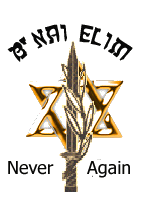














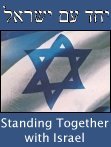

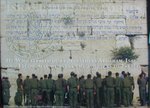
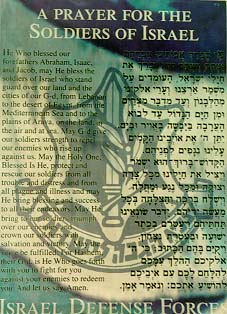







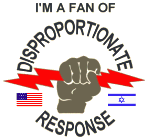



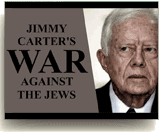

 While doing IDF (Israel Defence Forces) reserve duty on a mountain overlooking the
While doing IDF (Israel Defence Forces) reserve duty on a mountain overlooking the 

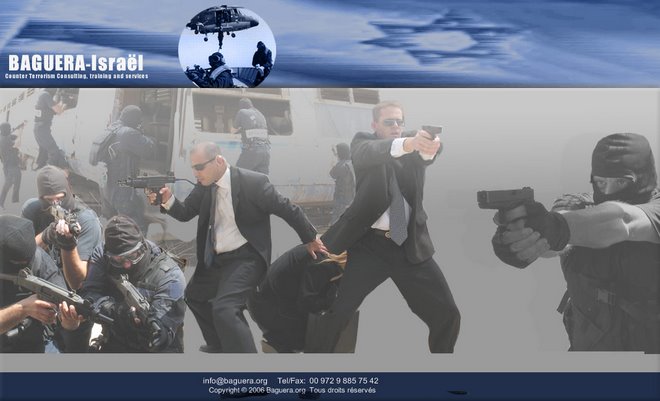



No comments:
Post a Comment